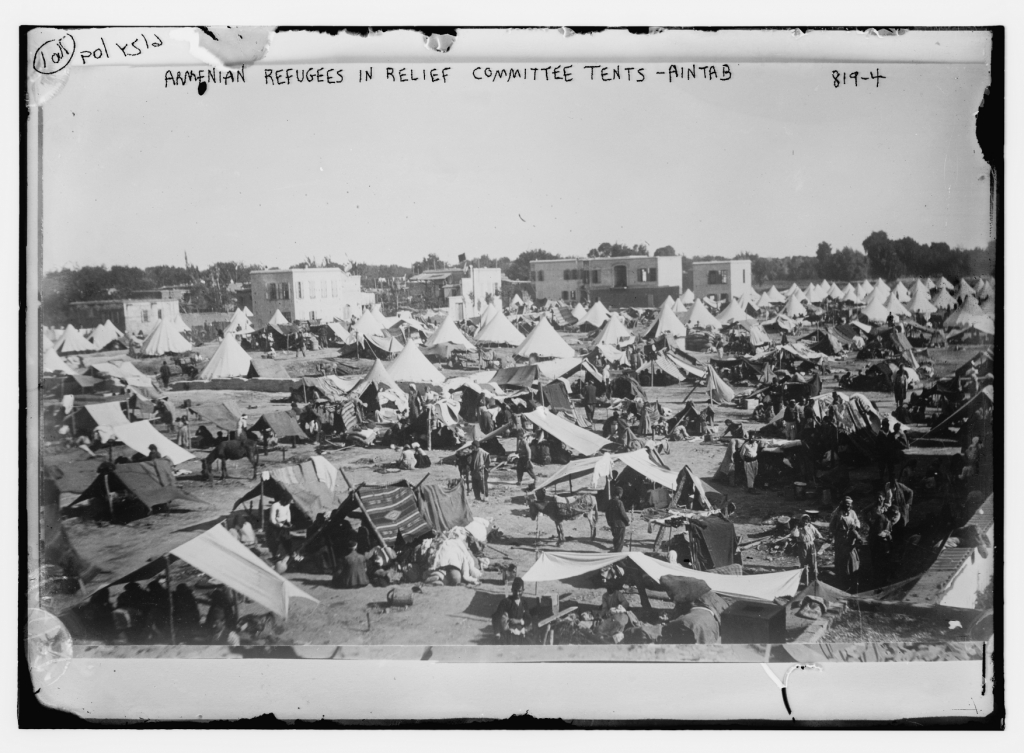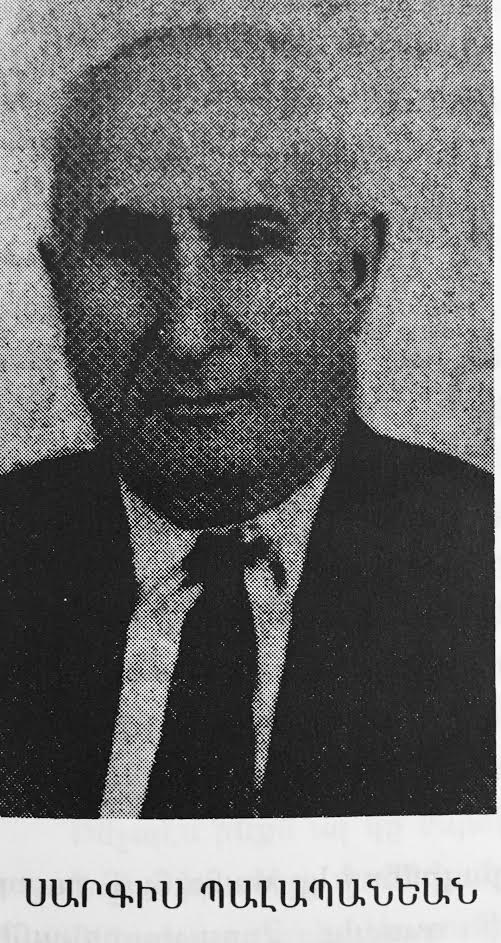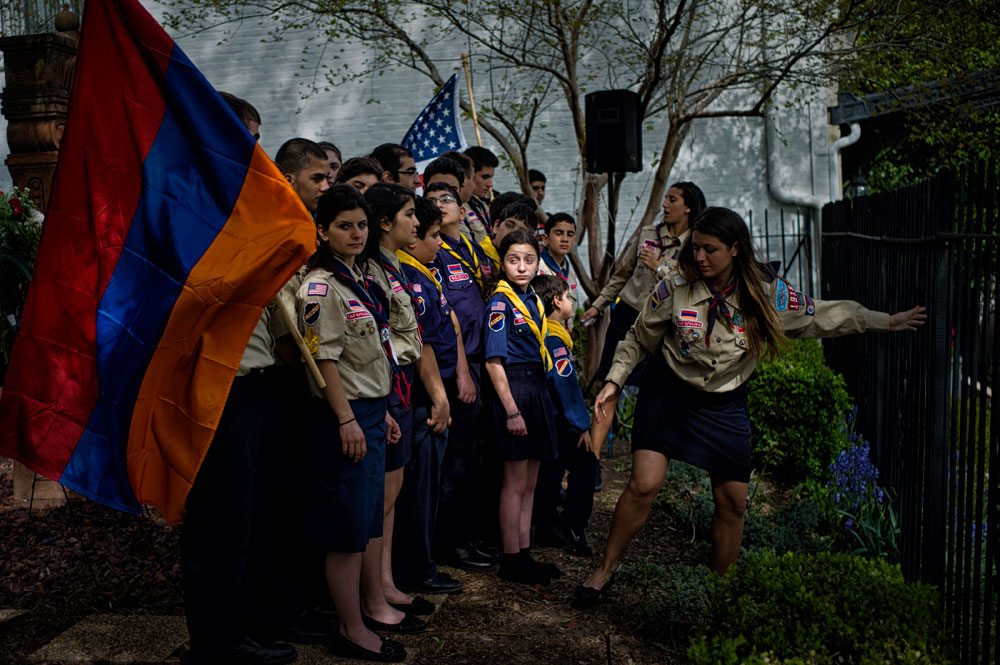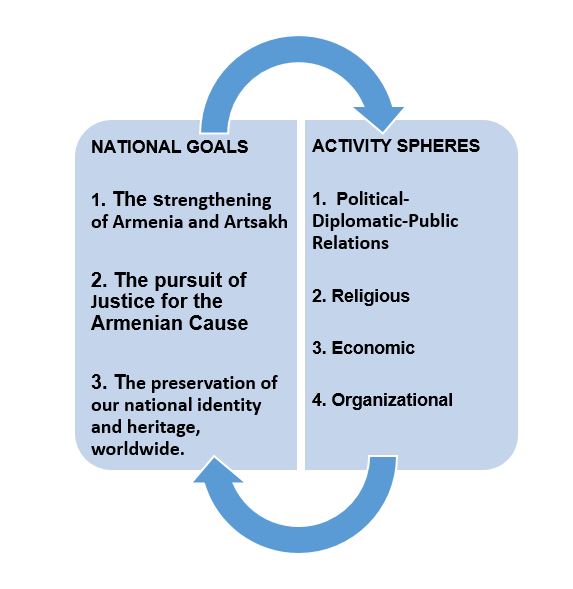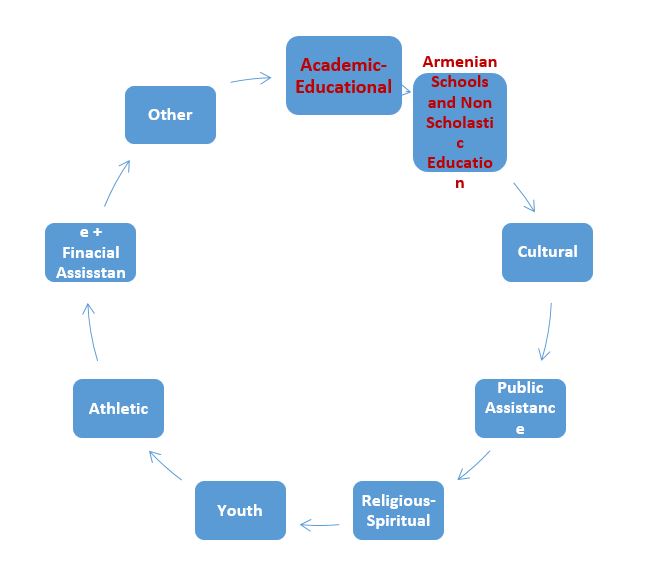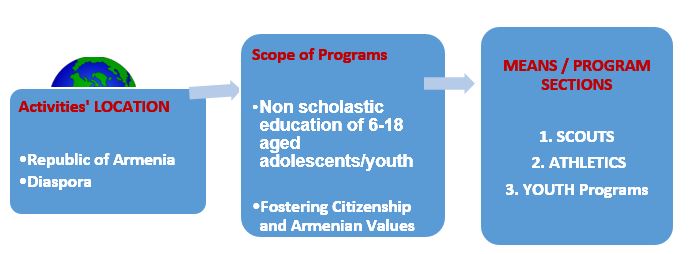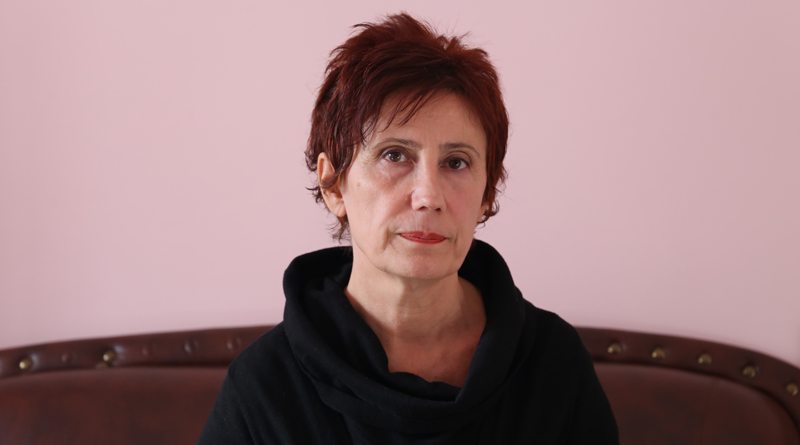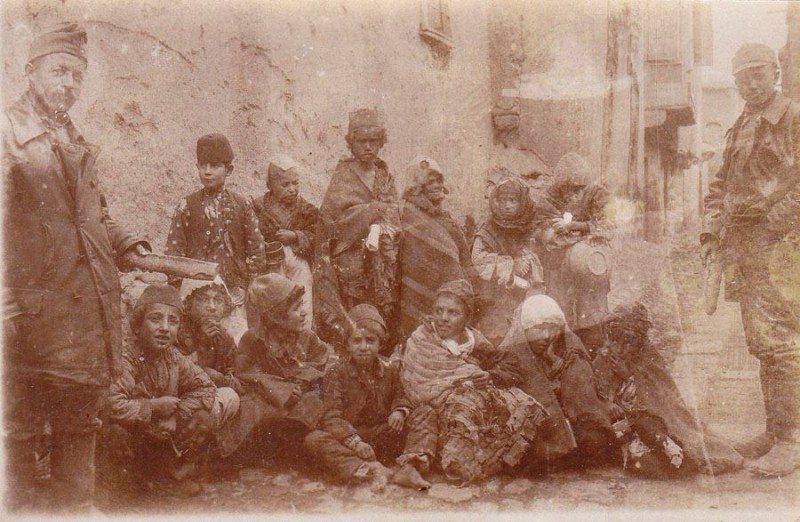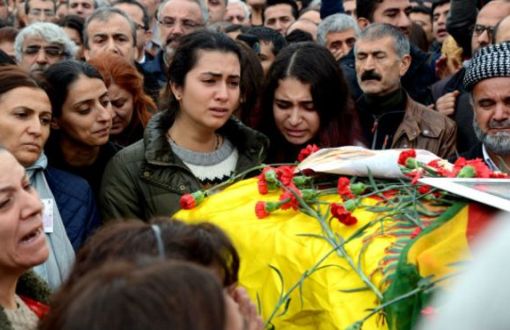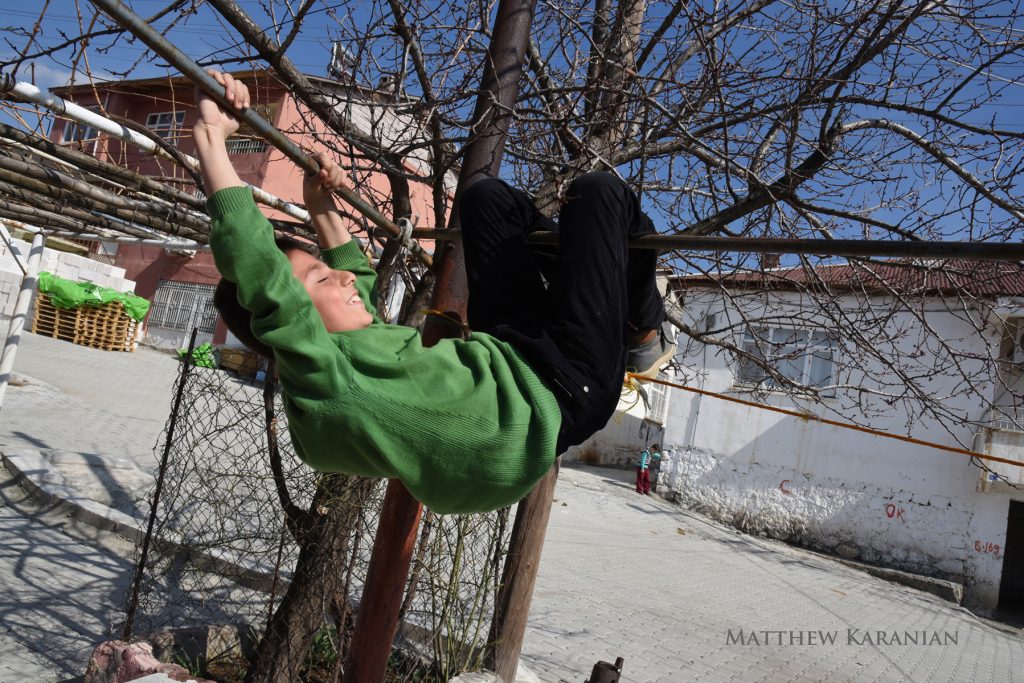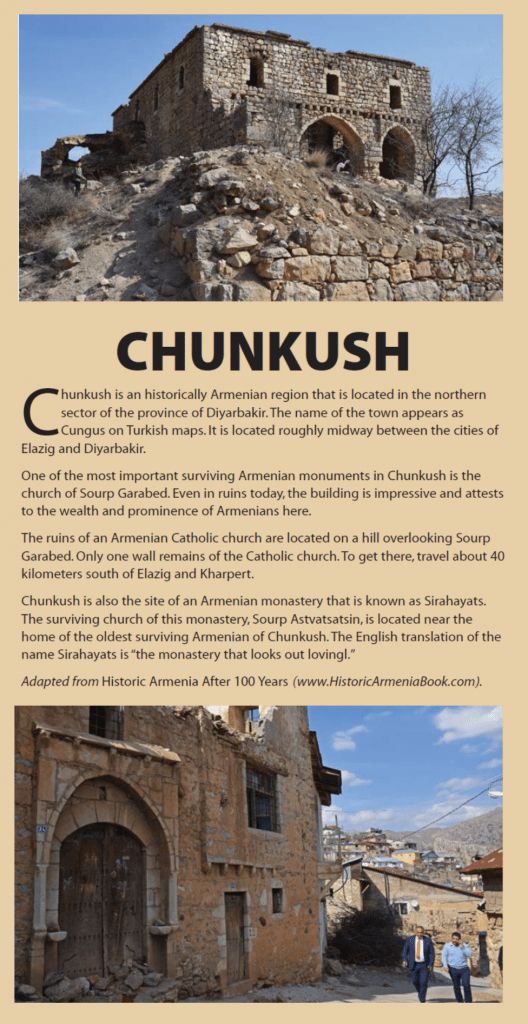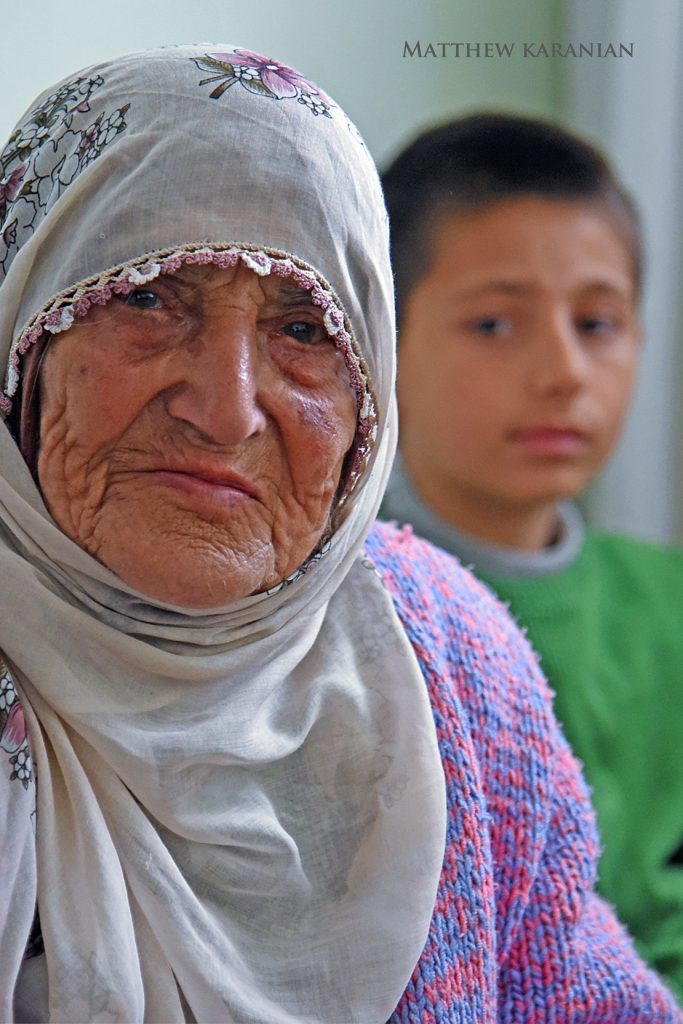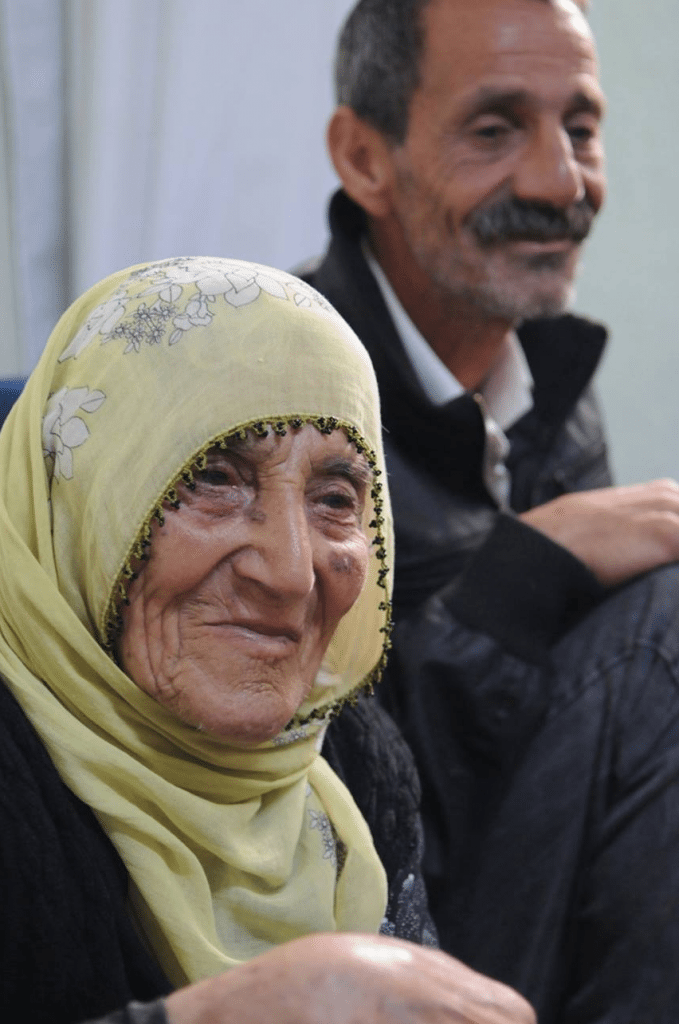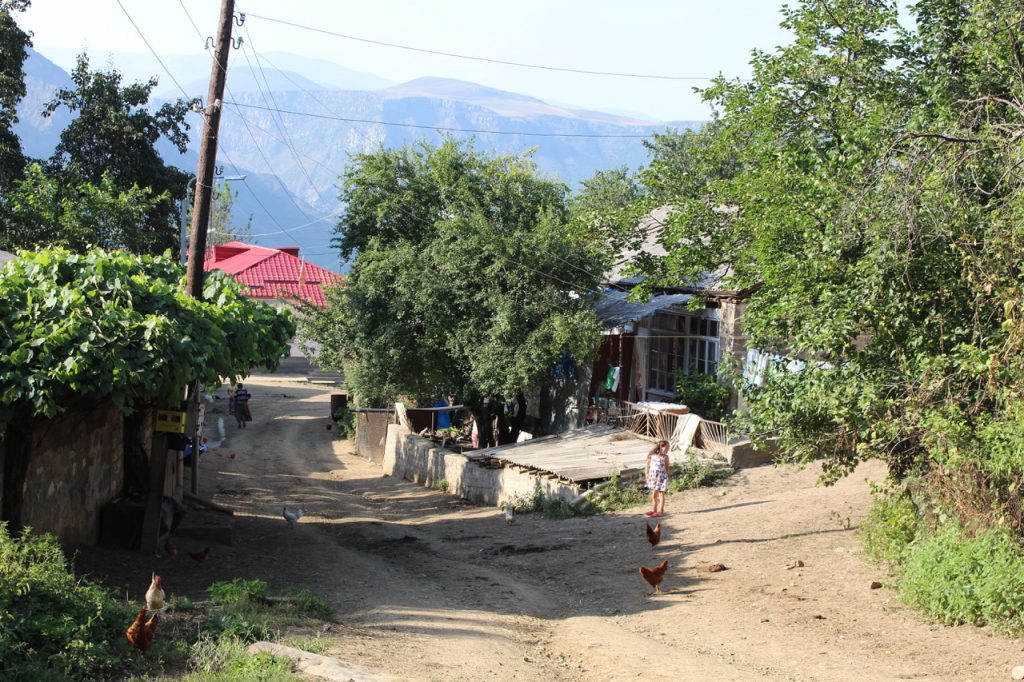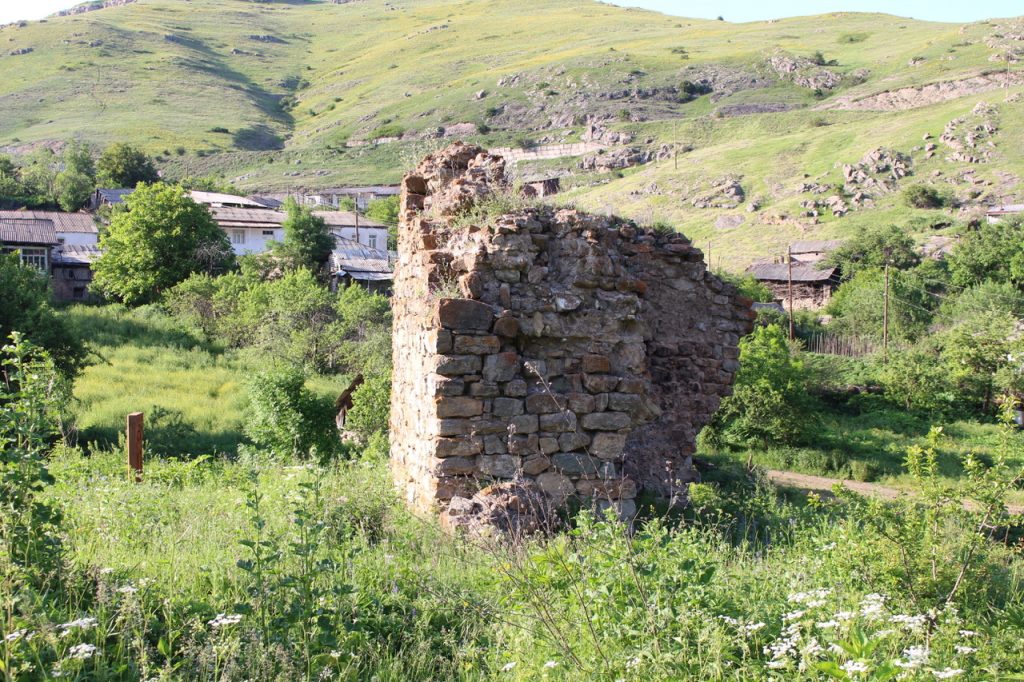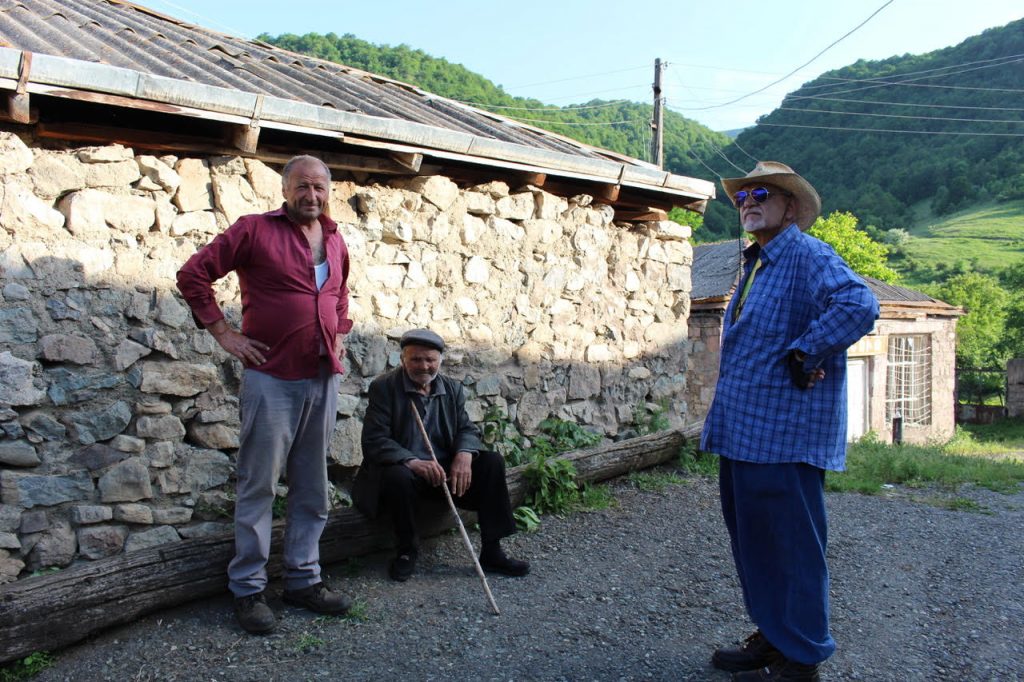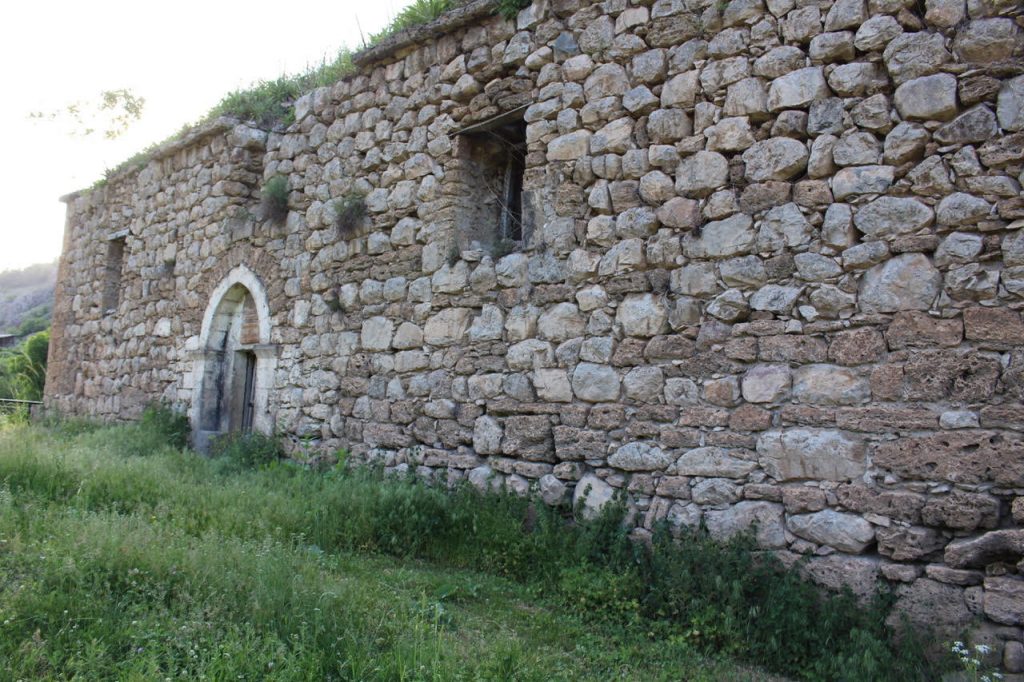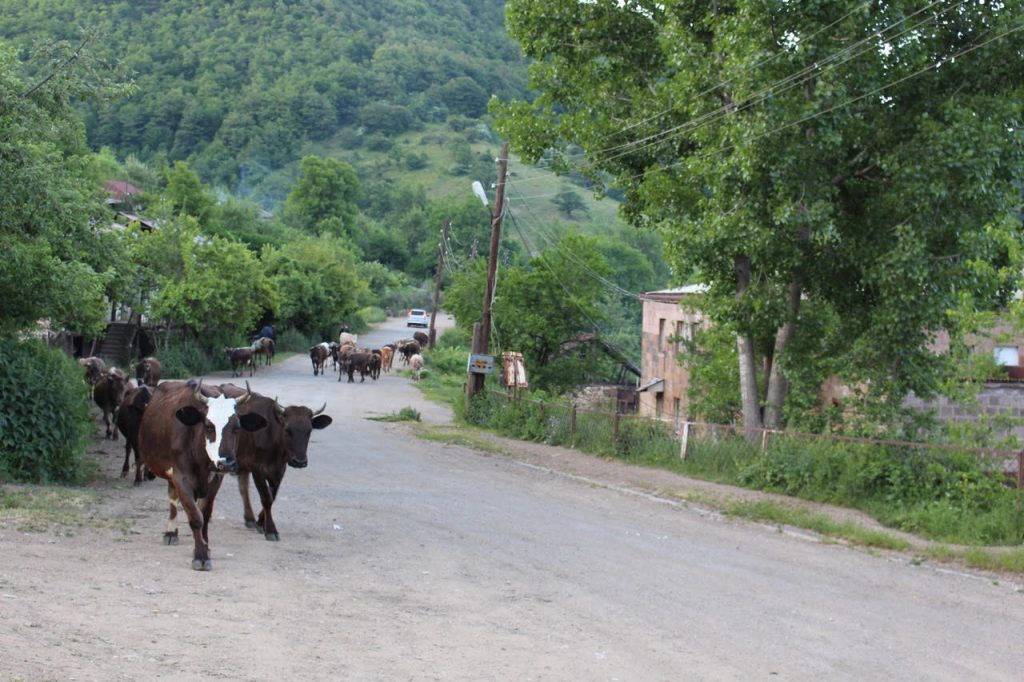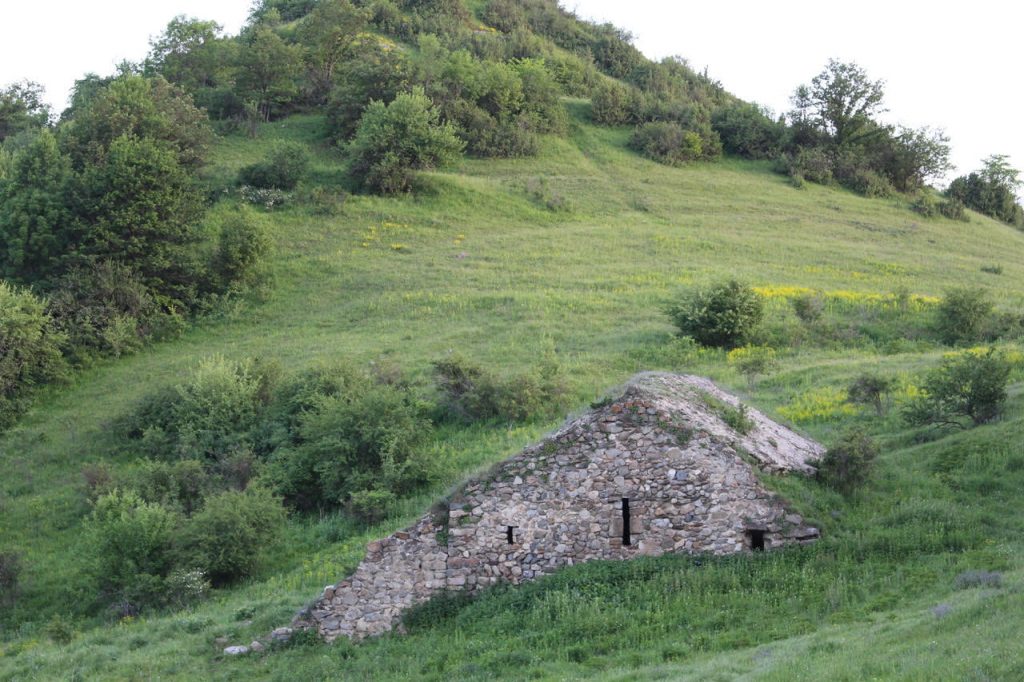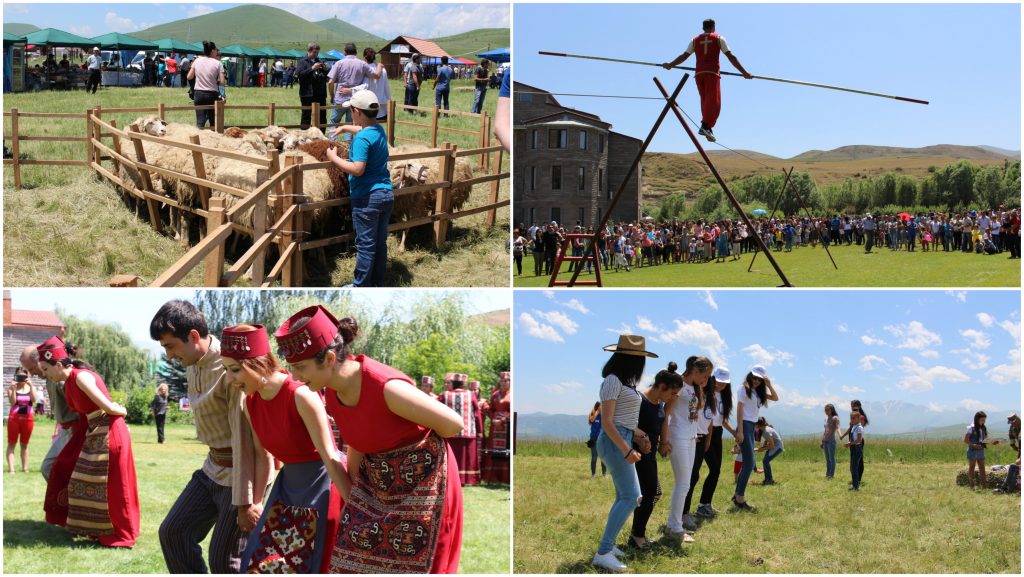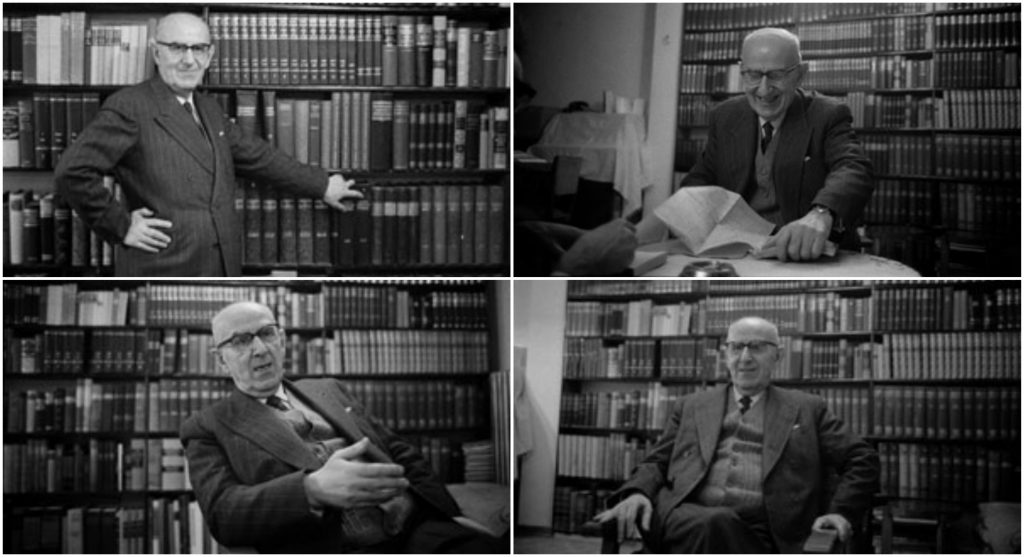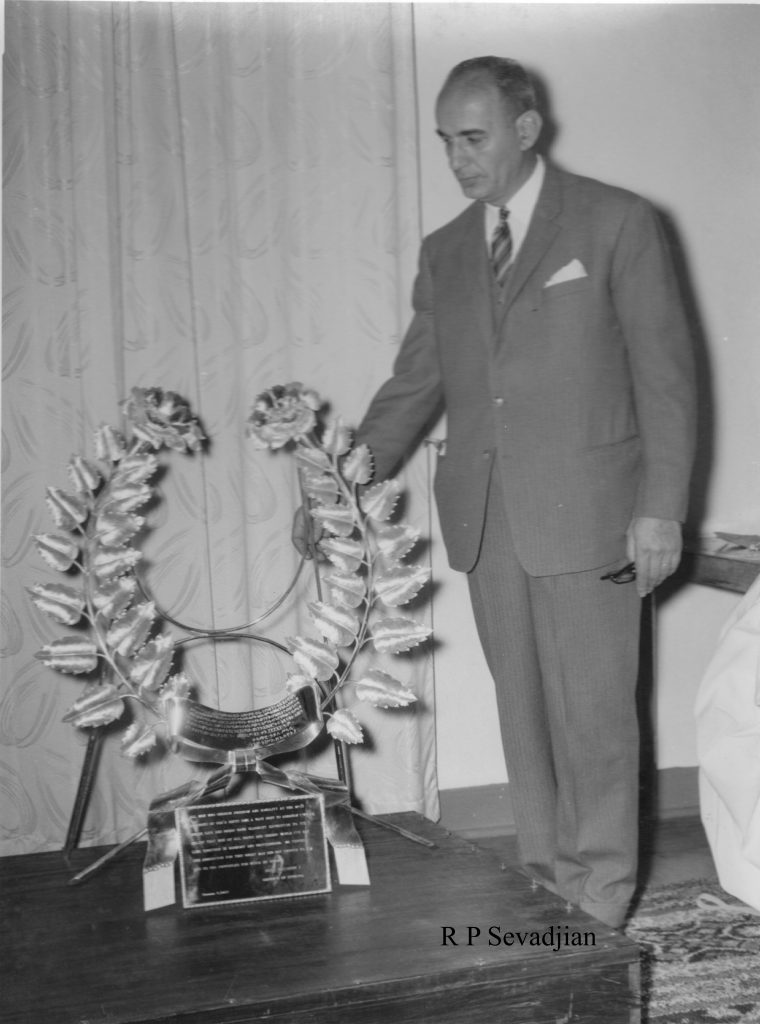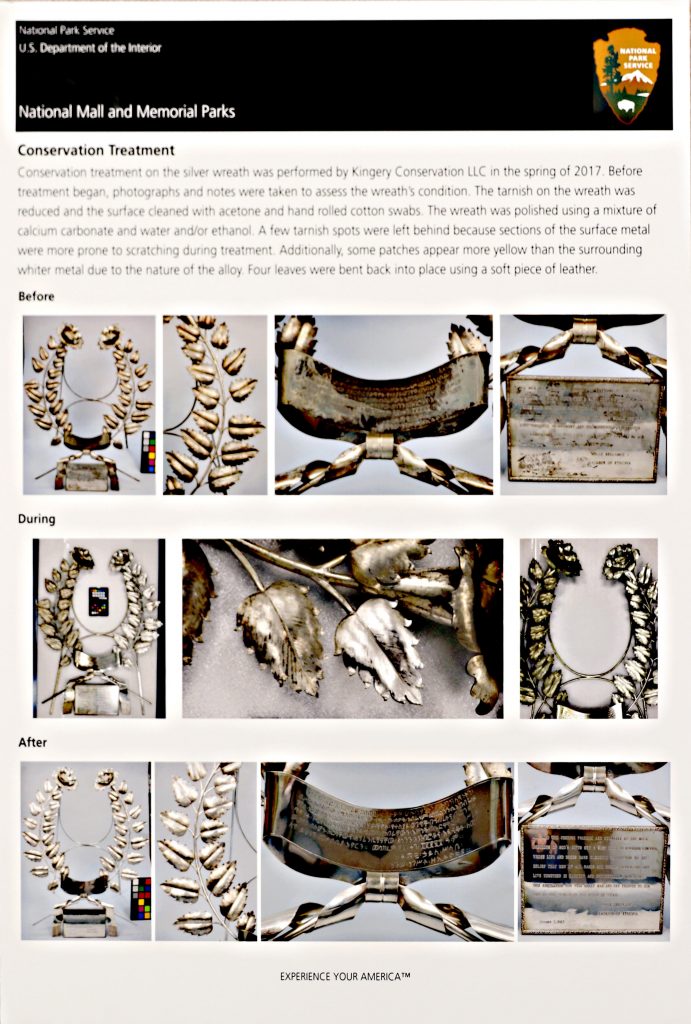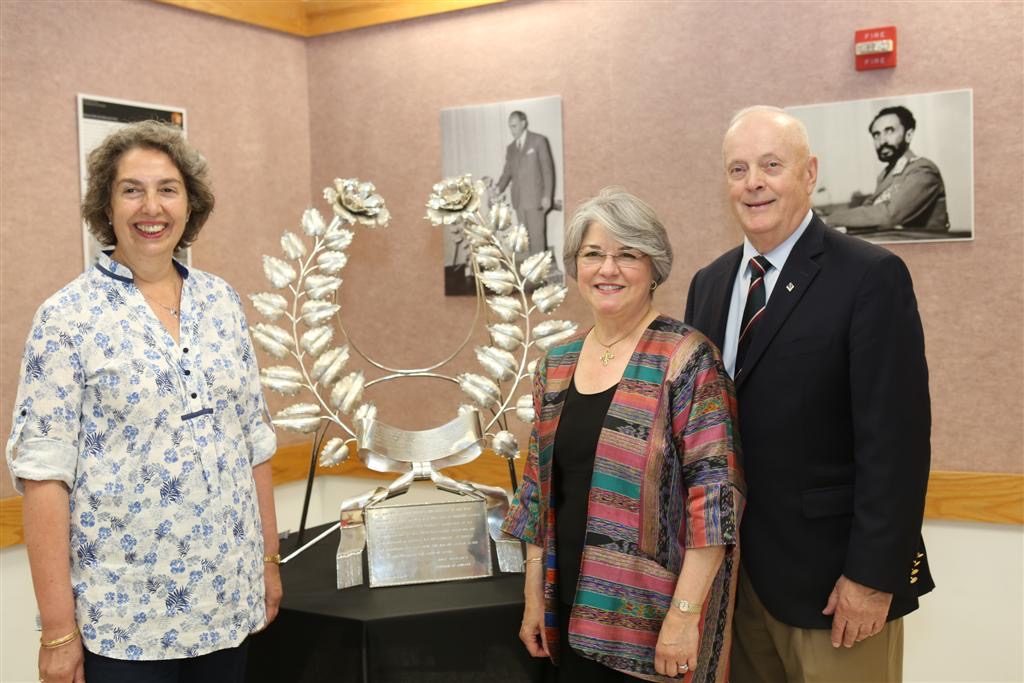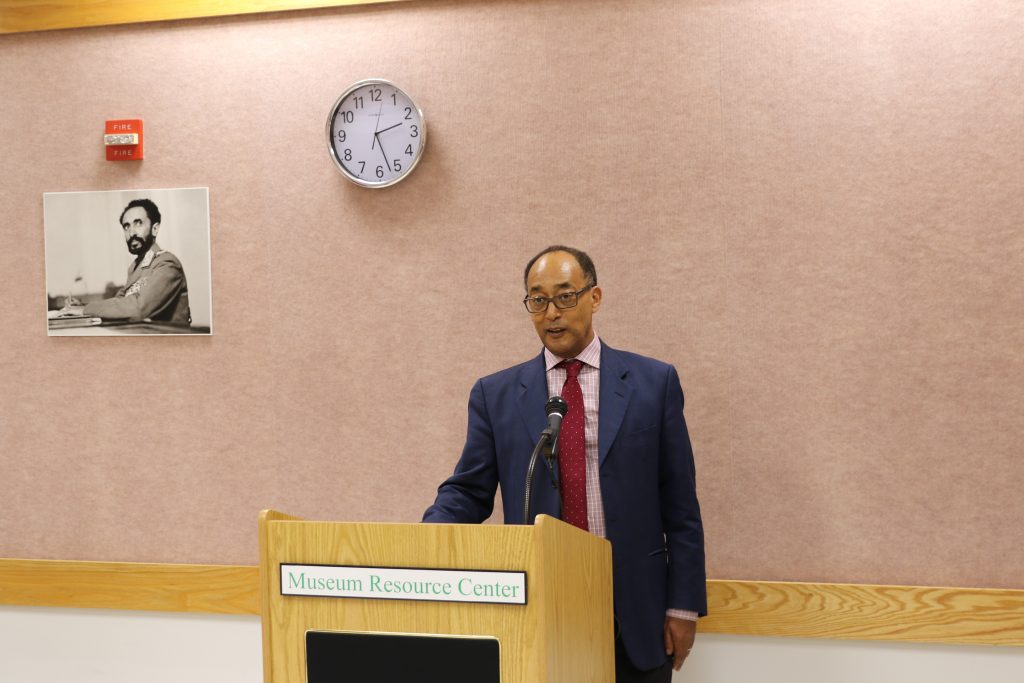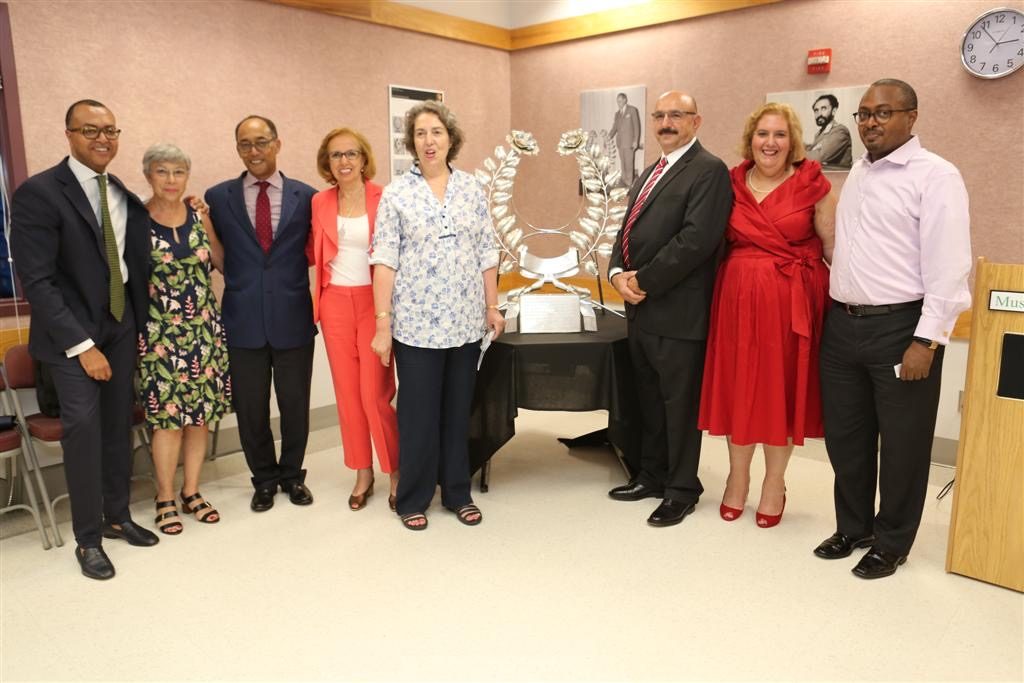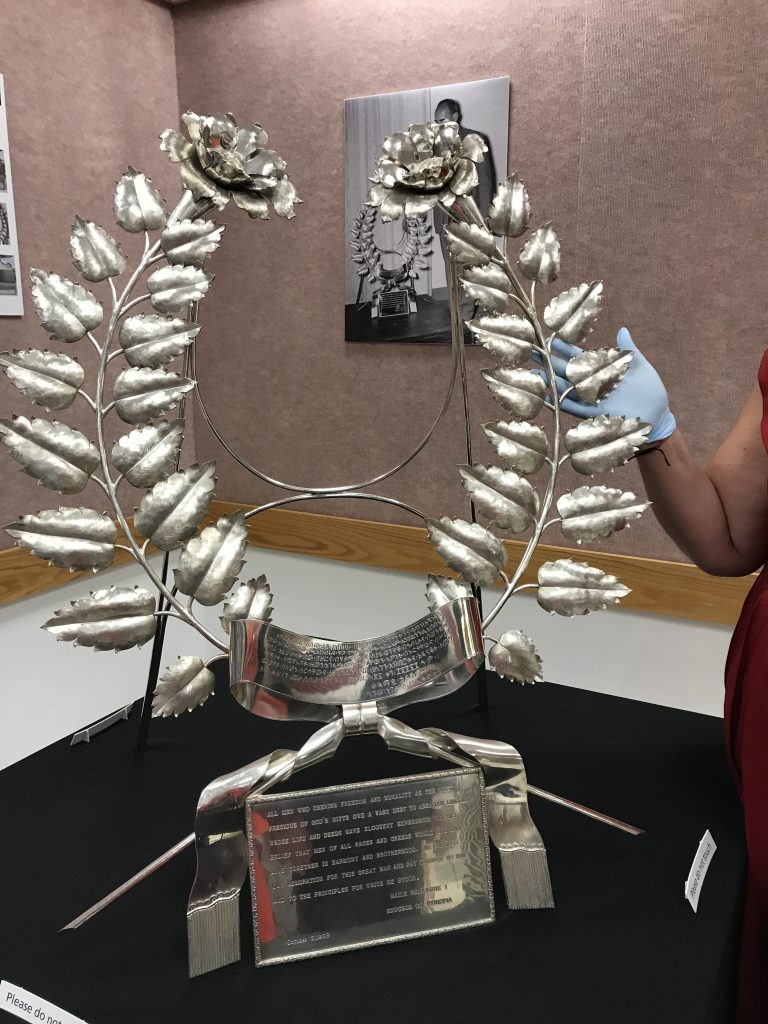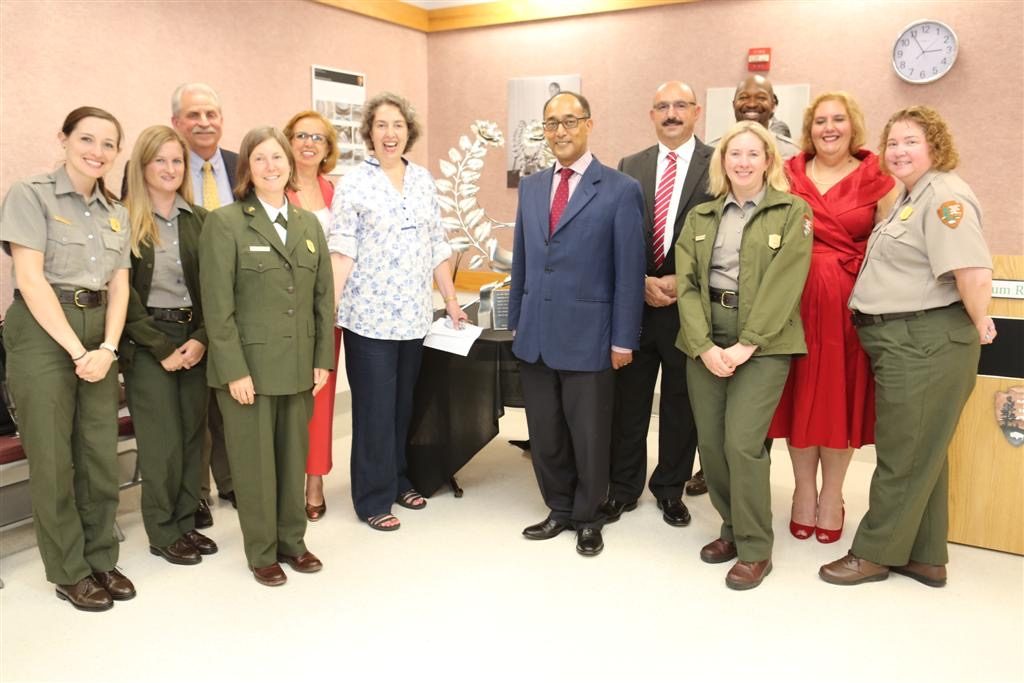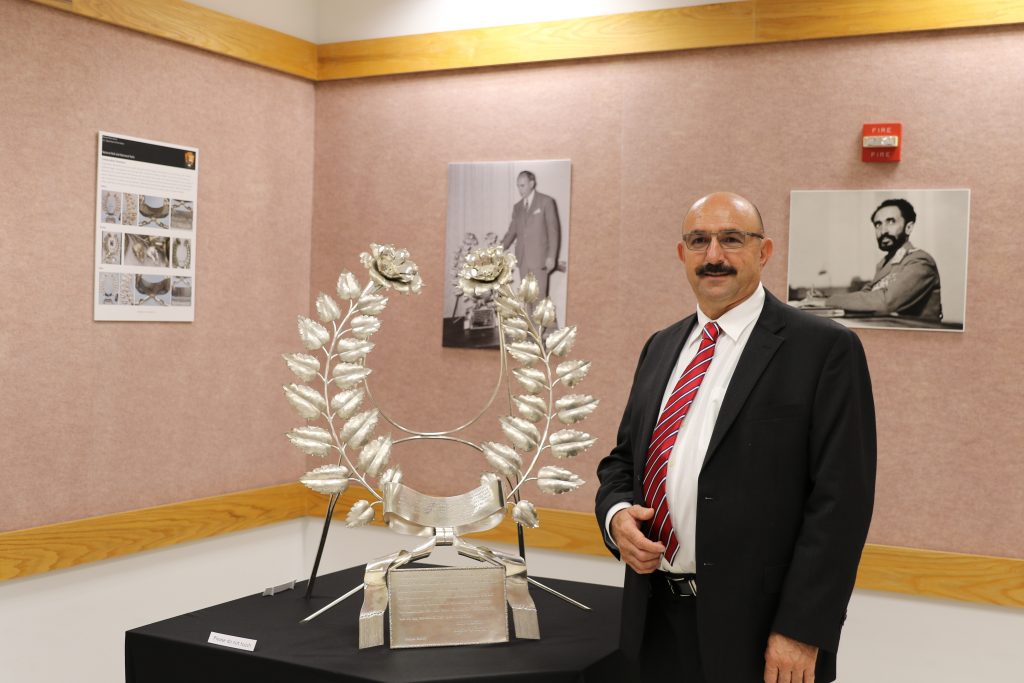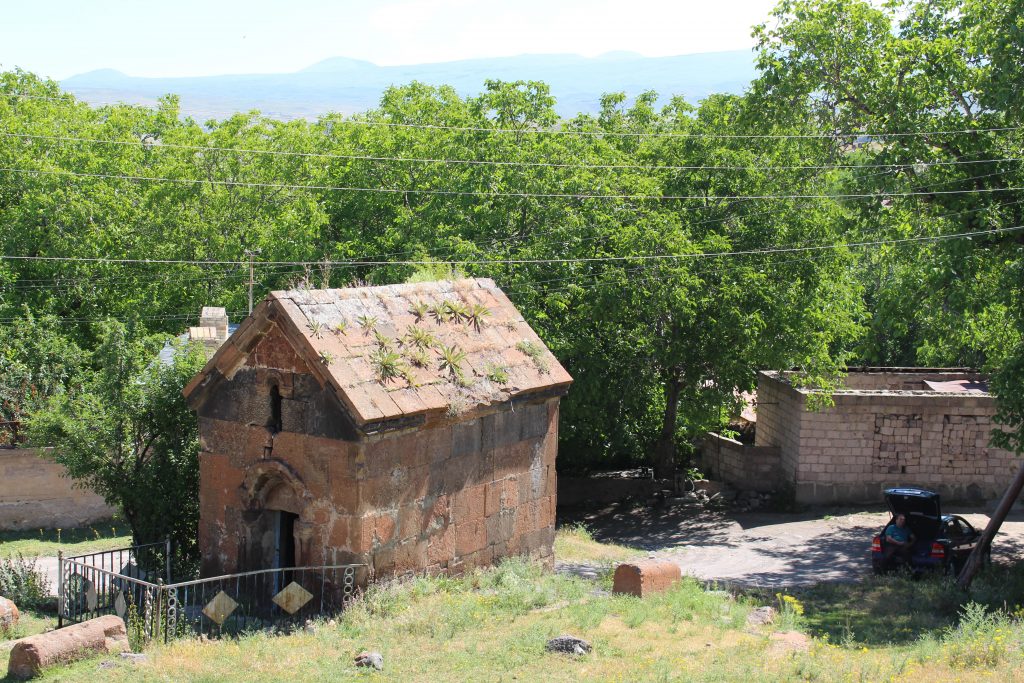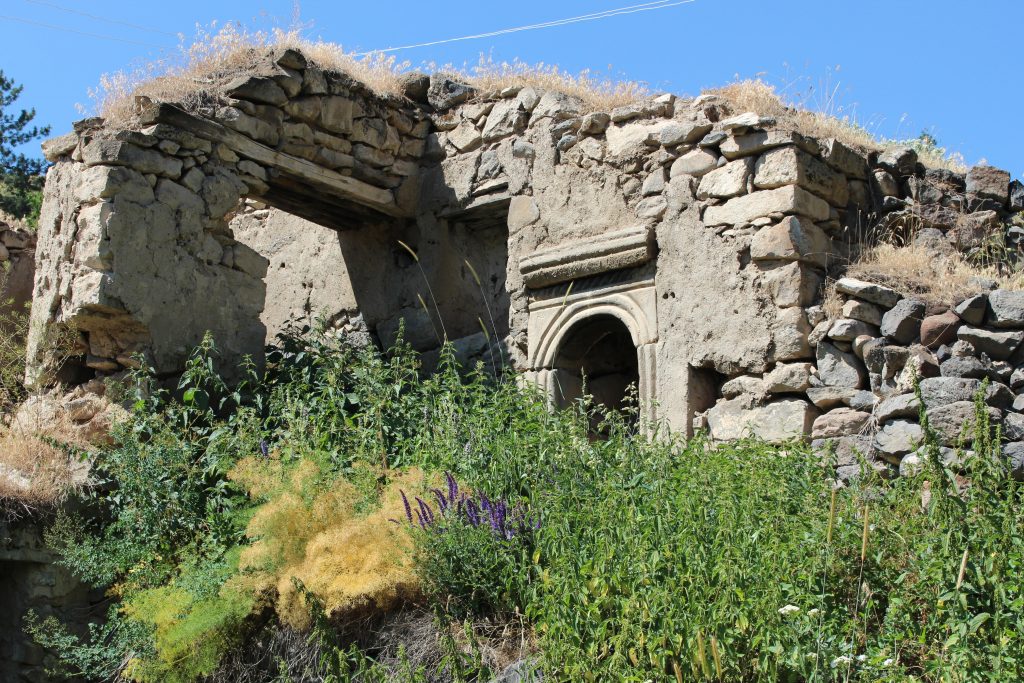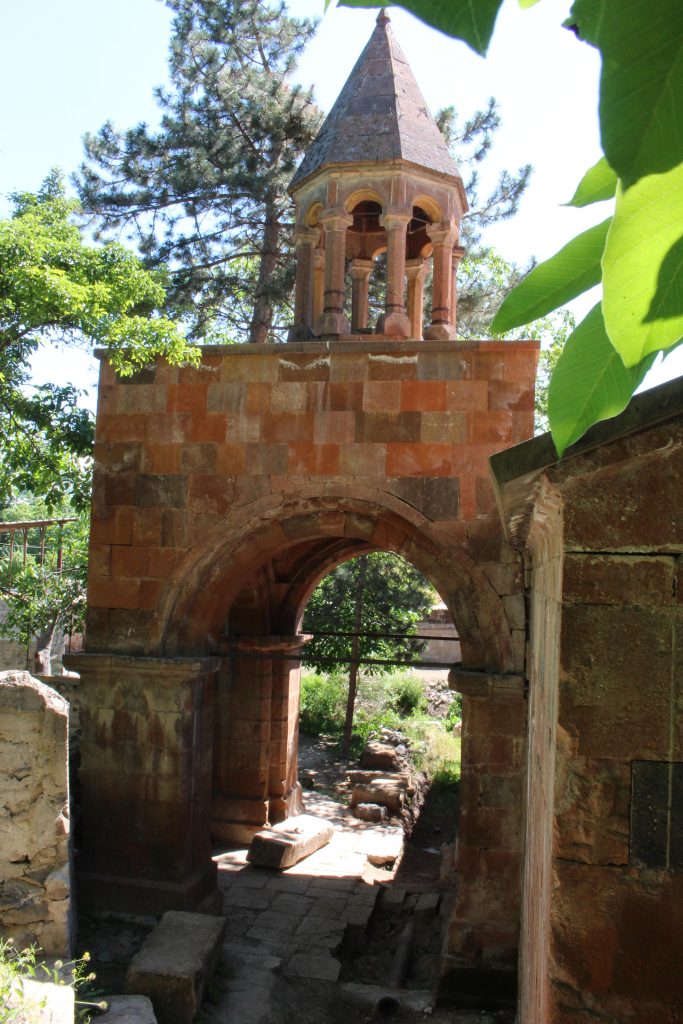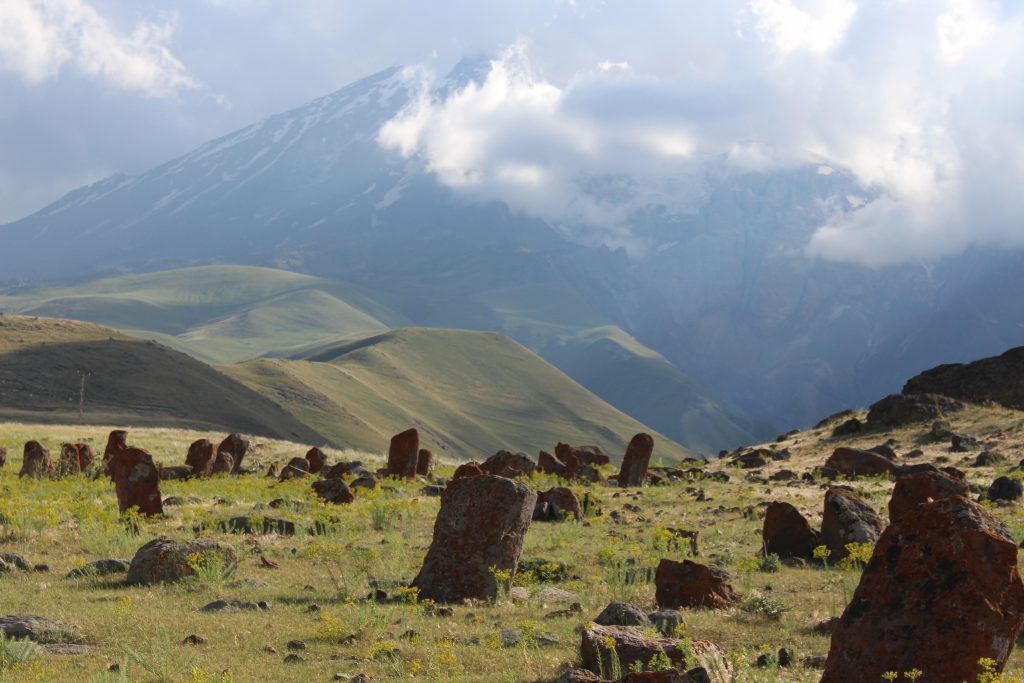From the Armenian Weekly 2017 Magazine Dedicated to the 102nd Anniversary of the Armenian Genocide
My grandfather was born in Beirut, Lebanon, in 1924. I know very little about his parents, save that both were young refugees from Erzerum; his father, Der Yeghishe Doghramadjian, was a priest in the Armenian Apostolic Church, and his mother, born Baydzar Ohanessian, was haunted by memories of her older sister’s death at the hands of a Turkish officer.
Yeghishe and Baydzar spoke Turkish at home, but here on the shores of the Mediterranean, hundreds of miles from their mountainous birthplace, their son grew up with a fully Armenian education, mastering the poems, songs, speech, and prayers of his scattered people. He married Nazelie Ohanian, a girl he had met while on a trip to Aleppo, and together they raised Hovhannes, Kayane, Haroutioun, Arshag, Arisdages, and Avedis. They lived in a small apartment in the picturesque seaside town of Byblos, where the children attended school at Trchnots Pouyn (The Bird’s Nest), an institution founded to educate refugees of the Armenian Genocide. It was no small task to feed and educate all six children, but my grandfather managed it with grace, simultaneously keeping a store, working as a mechanic, and serving as the caretaker of the Armenian cathedral in Antelias. All seemed well; in the Doghramadjian household, Armenia had survived, born again and regenerated in the fertile soil of Lebanon.
I grew up in very different circumstances, spending my childhood in the comfortable suburbs of St. Paul, Minn. I knew that I was named after my grandfather, a kind, dignified old man whom I had met on the several occasions we visited him in Lebanon. I knew that he called me on our shared name day, allowing me to recite the only Armenian words I knew: “Yes kezi shad ge sirem” (“I love you very much”). I meant those words. But I was more concerned with baseball games on the radio and violin practice than with pondering the reasons why my grandfather lived in the Middle East, I lived in Minnesota, and neither of us lived in Armenia.
It was only with age that the reality of the situation began to sink in. Driven by the kidnappings and bombings of the 1975-90 Civil War, 4 of my grandfather’s 6 children had left Lebanon, and only 2 of his 11 grandchildren could speak Armenian. The Turks had failed to erase our family’s Armenian spirit—but how long would it survive with us scattered all over the world, thousands of miles from both Erzerum and Byblos, a world away from both our first and second homelands?
By the time I began high school, I had set out to learn the Armenian language, intent on preserving the same songs, poems, and prayers that were so dear to my grandfather. Armed with a battered dictionary, the Internet, and plenty of encouragement from my family, I made steady progress, and after my freshman year of college I solidified my skills by spending a month in the Armenian Quarter of Jerusalem. The following summer I was finally ready to make my own pilgrimage to Lebanon, to explore the neighborhoods that had sustained my family and thousands like us. Twenty-five years after the end of the war, I wanted to know: What was the state of the Armenian community in Lebanon? How was this “second homeland” faring?
Lebanon is a nation of minorities, made up of 18 officially recognized religious communities and a population roughly evenly balanced between Sunnis, Shias, and Christians. With no group strong enough to simply impose its will on the others, the nation is in what Lebanese American University (LAU) professor Dr. Imad Salamey calls “permanent formation mode.” While such a lack of resolution has its drawbacks, it also means Lebanese nationalism is “inviting, attractive to keep on engaging.” Without answers imposed from the top down, questions of Lebanese identity must be worked out as a collectivity; Salamey compares this process to students formulating their own curriculum. He views the country’s model as one of “deliberative nationalism,” which differs sharply from the authoritarian brand of national identity found throughout much of the Middle East.

The Sardarabad agoump, one of the many community centers run by the Lebanese ARF (Photo: Hagop Toghramadjian)
The impossibility of single-group domination also means the nation’s citizens are not oppressed politically. The government has traditionally allowed for communal freedoms and local decision-making, a fact many Lebanese proudly regard as a sign of their state’s distinctiveness. Especially after the outbreak of the Civil War in 1975, the majority of schools, hospitals, and charities have been administered under sectarian self-government. While some services—such as trash collection or maintenance of the airport—require centralized decision-making, local authorities are vested with a high degree of autonomy. In recent years, the state’s importance has been further reduced; most government-level decisions have moved out of the hands of parliament and the president, to be made by an extra-institutional committee of sectarian elites. What remains of the state is run by a council of ministers, especially after the presidency sat vacant from May 2014 to October 2016. Indeed, as Salamey points out only half-jokingly, the “state pretty much doesn’t need to exist.”[1] Such a condition certainly includes steep disadvantages, but its allowance for local autonomy leads Salamey to suspect that other countries in the region, especially Iraq and Syria, may adopt the Lebanese model.
Competition and autonomy is not the whole story, however. A key component of the Lebanese model is that sectarian groups’ independence coexists with a strong sense of Lebanese identity. Salamey points to the Armenians as an example of an extremely distinctive community for whom this is true—their “uniqueness does not [preclude them from] sharing Lebanese concerns.”
Armenian voices echo this sentiment: In the words of LAU’s Annie Lachinian-Magarian, “Armenians are part and parcel of the Lebanese political fabric.” Although their early 20th century arrival makes them relative newcomers, and although they are the only Lebanese group to speak a language other than Arabic, Armenians generally feel accepted in Lebanon.
Both reasons for and evidence of this sense of acceptance are evident on a walk through Bourj Hammoud. The headquarters of mukhtars (official municipal leaders) are emblazoned with Armenian script, often announcing that the mukhtar himself is Armenian. Balconies fly Armenian and Lebanese flags side by side, and banners praising the Lebanese Army flutter on main Armenian shopping streets. As local priest Fr. Dajad Ashekian emphasizes, “We are Lebanese Armenians.”

Armenian and Lebanese flags alternating on a side street near Holy Savior Armenian Catholic Church (Photo: Hagop Toghramadjian)
Evidence of integration is present in wider Lebanese culture as well, from popular music to commemoration of the Armenian Genocide. In 2007, the famous singer Ghassan Rahbani composed and sang “We Live Here,” a song in Arabic and Armenian that proclaims in both languages: “We will live here, we will die here; together we will build you up. We love the homeland with our heart and soul—we are the Armenians and we are Lebanon.” In April 2015, the 100th commemoration of the Armenian Genocide essentially “shut down the country,” in the words of LAU professor Dr. Elise Salem. Thousands of non-Armenians joined in the protest marches, closed their businesses, and put up posters in solidarity. These are just two examples of the Armenian community’s acceptance in Lebanese culture and society. It follows, according to Haigazian professor Dr. Arda Arsenian Ekmekji, that “we are proud to walk on the streets and say we are Armenian.”
This sense of belonging is compounded by the Armenian community’s political position. Ekmekji states, “Politically speaking you cannot be ignored as an Armenian. We do have key positions and people respect us.” Lebanese citizenship was only created in 1926, when the country already contained hundreds of thousands of Armenians; as Ekmekji puts it, “We became Lebanese at the same time as everyone else.”
This means Armenians enjoy official political privileges. According to Lebanon’s unique system of sectarian quotas, 5 to 6 of parliament’s 126 seats are reserved for Armenians, and 2 of the country’s 30 ministers are also usually Armenian. Moreover, the community is well established enough that it does not vote as a single block: there are three Armenian political parties with representation in parliament, one in the ruling March 8 Alliance and two in the opposition March 14 alliance. Armenians are also active outside of their own parties. Emile Lahoud, who served as president from 1998 to 2007, is half-Armenian and married to an Armenian, and Karim Pakradouni, the former leader of the prominent Kataeb Party, is also half-Armenian. In other words, rather than concentrating their strength in one place, Lebanese Armenians play a diversified and sophisticated role in the nation’s politics.
While government representation offers Armenians an important sense that they belong in Lebanon, the core of the community’s strength is its own religious, educational, and social institutions. Armenians operate 3 daily newspapers, two 24-hour radio stations, approximately 27 primary and secondary schools, 1 university, 29 churches (16 Orthodox, 7 Catholic, and 6 Protestant), and 2 patriarchates with global jurisdictions (Orthodox and Catholic). These institutions are relatively healthy: The churches have numerous young seminarians and, according to Fr. Ashekian, there are more Orthodox clergy now than at any point in Lebanese-Armenian history. Spring 2015 saw the graduation of over 300 students in a joint ceremony incorporating each of the Armenian high schools. All this means the community is undoubtedly the most vibrant in the global Diaspora.
As Ekmekji emphasizes, Lebanon—unlike other major hubs such as Russia, France, or even the United States—remains a net exporter of priests, journalists, and educators to Armenian churches, publications, and schools around the world.
Beyond institutions, measuring the community’s health is a less straightforward proposition. The population is difficult to estimate, both because many Armenians split their time between Lebanon and abroad and because no census has been conducted since 1932. Moreover, it is unclear how to count the small but significant number of Armenians who have fully or partially assimilated into Arabic-speaking society. “Numbers are scary in Lebanon,” Ekmekji says, in large part because no community wishes to lose seats from its parliamentary quota. She places the Armenian population at 125,000 at least; LAU’s Annie Lachinian Magarian estimates it at 80,000 to 90,000; and Haigazian’s Dr. Antranig Dakessian guesses 60,000 to 90,000. None of these numbers include Syrian-Armenian refugees, tens of thousands of whom now live in Beirut but who are emigrating to the West at a fast rate. Regardless of statistics, the community has what Dakessian calls “very powerful exposure.” Unlike Armenians in Europe or North America, Lebanon’s Armenians are highly visible. Two Armenian cathedrals occupy extremely prominent spots in central Beirut, Armenian businesses abound across the city, Armenian newspapers are sold at most newsstands, and Armenian is regularly heard on the street in any of the capital’s Christian neighborhoods.
Based on the dozens of instances I heard Armenian spoken outside the core area of Bourj Hammoud, the sheer number of Armenian businesses scattered across the city, and the relative health of community institutions, I believe higher estimates of the population have credence. This premise is reinforced by the fact that at least 70,000 people marched in commemoration of the Armenian Genocide on April 24, 2015—the overwhelming majority were Armenian, and tens of thousands of Armenians did not march.
The Armenian story in Lebanon is not completely rosy, however. While many in the community’s prosperous intelligentsia express optimism, working-class inhabitants (concentrated in Bourj Hammoud) are generally less confident. The neighborhood has become less homogenously Armenian since the end of the Civil War, with many who are able opting to move to comfortable suburbs like Mezher or Dbayeh or even abroad. Meanwhile, the neighborhood has seen an influx of Kurds and South and East Asian migrant workers.
Armenians left in Bourj Hammoud are often filled with nostalgia for the past and uncertainty—verging on pessimism—towards the future. This was especially clear when I asked Bourj Hammoud residents to estimate the overall Armenian population in Lebanon. One resident, “George,”[2] claimed that the pre-war population had been 500,000, but that it is now closer to 30,000. (In reality, there were probably 250,000 to 300,000 Armenians in Lebanon before the onset of the Civil War in 1975—10 to 12% of the overall national population). His friend “Raffi” agreed, and they both mentioned that with closing factories and dwindling job opportunities there is little hope for improvement. In George’s words, “everything is over”; the government and commerce are controlled by the “mafia,” and there is nothing he can do to improve his situation.

Haigazian University is supported by the Armenian Evangelical community (Photo: Hagop Toghramadjian)
Bourj Hammoud’s youth are scarcely more optimistic. Young adults at the Azilian agoump offer their own low population estimates, and while none of them can remember life before the war, they insist it was much better than the current situation.
Residents’ pessimistic views of community health influence how they perceive Lebanese identity. Young adults at the agoump indicate that they feel Armenian but not Lebanese; when asked why the Lebanese flag is displayed in their meeting room they say it is only there because “it has to be.” A local shopkeeper, “Harout,” goes even further—he says that ever since the Civil War he has not liked living among Arabs, and as a result he actively encourages his children to emigrate. “You can live as an Armenian in Lebanon,” he says, “but not as a man. Maybe in France or America you can live as both.” While these views are not representative of most Lebanese Armenians or even the bulk of Bourj Hammoud residents, they point to internal diversity in Armenian perceptions of Lebanese identity.
This internal diversity is a vital topic when analyzing the Armenian experience in Lebanon. According to Ekmekji, the community can be divided into three categories: The first lives and works in almost exclusively Armenian circles, without much engagement with the broader Lebanese society. This group is a minority, and while “Harout” and the youth at the agoump exemplify its experience, most of its members are elderly. The second and largest group is very well integrated, and moves comfortably through Lebanese society while still firmly maintaining its Armenian heritage. Its members can be found throughout Lebanon, in Bourj Hammoud, and especially in the surrounding suburbs. It is from this class that Armenians active in Lebanese government, arts, and media are generally drawn. A third group, again in the minority, is mostly or completely assimilated into Lebanese culture, with limited ties to its Armenian heritage save perhaps sporadic church attendance.
Multiple reasons lead to loss of Armenian identity. Ekmekji emphasizes that “being Armenian is a lot of work,” and that some families are increasingly reluctant to make time for learning and expressing their heritage. Additionally, rates of intermarriage are increasing—it is no longer uncommon for Armenians to marry individuals from other Lebanese Christian groups.
Beyond fear of assimilation and the aforementioned economic challenges, Lebanese Armenians experience anxiety about their changing global role and the spillover effect of the catastrophic war in Syria. Before the exodus of Armenians from the Middle East in the 1960s to 1980s and the independence of Armenia in 1991, Lebanon viewed itself as the center of the Armenian world. Philanthropic money flowed in from the global diaspora, “financing the survival process,” in the words of Dakessian. This money has since been redirected to Armenia, and the regional leadership Lebanese Armenians once exercised over thriving communities in Syria, Iraq, Egypt, Jordan, and Palestine has become less meaningful as a result of heavy emigration.
The Syrian crisis has further exacerbated Lebanese Armenians’ sense of isolation. As Ekmekji puts it, “The events have [created] a big question mark.” More than ever, Armenians must wonder, “Is Lebanon a permanent place or a stop on the way to something else?” In the back of everyone’s mind is the “fear of being forced out—we always think, will we one day have 24 hours to pack and go?” This scenario has befallen thousands of Armenians in Syria, many of whom have fled to Lebanon; their presence is a stark reminder of the tenuousness of security in the region. In order to prepare for possible future unrest, Ekmekji estimates that 80 percent of Lebanese Armenians have applied for passports from the Republic of Armenia, a step that facilitates travel and opens the door to repatriation.
LAU’s Vatche Papazian relates that there has been a small but noticeable increase in the emigration of native-born Lebanese Armenians since the start of the Syrian conflict; if the status quo continues, this flow is unlikely to pick up, but additional deteriorations in real and perceived security could lead to large-scale migration and a decline in community numbers.
The question of whether Armenians have a special proclivity for migration is an interesting one. On the one hand, it is “definitely much easier for an Armenian to pack and leave than a Maronite on the land his great-grandfather farmed,” Ekmekji says. Because Armenians are aware that Lebanon is not their original homeland, emigration is not an unprecedented or radical proposition. However, Salem rebuts the idea that Christians are more likely to emigrate than Muslims. While this was once true, today “the Lebanese all know how to leave.” Especially as economic inequality between the sects has become less and less noticeable, the financial ability to move to the West has become more evenly spread between all Lebanese citizens.
If the Armenians are to remain in Lebanon, the continued viability of the national political system is indispensable. As discussed above, this system offers a number of advantages, allowing for group autonomy while encouraging a sense of shared national identity. However, many Lebanese are severely disillusioned with their political leaders. There is near-universal consensus that party heads (many of whom are holdovers from the Civil War or inherited their positions through family connections) are corrupt and self-interested. Ekmekji and Salem both explain that the perceived problem is not Lebanese laws or political organization; instead, discontent is generally directed toward specific individuals.
A common view of leaders is that they operate based on the tacit agreement, “I’ll let you have your corrupt man if you let me have mine.” There is palpable public anger against this situation. During my time in Beirut I observed multiple anti-corruption protests and heard dozens of complaints in everyday conversations. One man memorably aired his grievances while sitting next to me on a taxi ride from Bourj Hammoud to Mar Mikhayel. He was traveling to resolve a problem at the electricity ministry, and immediately launched into a colorful and enraged tirade against the government. “Damn the government,” he said in Arabic to the driver. “We love our country but the government is made up of animals. I’m Lebanese! Armenian but Lebanese! Damn the whole government from top to bottom. I’m more Lebanese than any of them.”
A second problem facing the Lebanese political system is that of gridlock and paralysis. The nation has not had parliamentary elections since 2009, and none are scheduled until later this year. Moreover, the parties spent more than two years without agreeing on a president, before Michel Aoun finally stepped into the position in November 2016. According to Salamey, the frozen nature of national politics is caused by fear—no group wishes to antagonize any of the others, especially in light of the deepening Sunni-Shia divide provoked by the Syrian War.
Ekmekji characterizes the situation bluntly: “Lebanon is not a true democracy, because every time we make a decision we must do it by consensus. It’s like a children’s game where everyone wins.” Gridlock significantly contributes to the discontent felt by Lebanese citizens about their political system. According to Dakessian, “Whether we are engaged in Lebanon or not, we can’t make a difference.” While this is certainly a hyperbolic statement, popular participation in the democratic process is undoubtedly muted by a sense that change is unattainable.
Given Lebanon’s uncertain political future, there is no guarantee that the nation’s Armenian community will remain viable in the long term. But there are also plenty of reasons for hope. Lebanon’s Armenians have already proved remarkably resilient, surviving years of war and instability while steadfastly maintaining their community institutions. They are generally well integrated and proud of their Lebanese identity, which many feel allows them to be “fully Armenian” and “fully Lebanese” at the same time. While some in the community are less content, the reigning mood is one of attachment to Lebanon and desire to remain in the country.
Especially in light of the Syrian War and the devastation it has wrought on the community in Aleppo, Lebanon is more important than ever for the global Armenian Diaspora. It is truly a “second homeland” for the Armenian people, a place where we were reborn from the ashes of the genocide and rebuilt a corner of Western Armenia. This corner continues to survive—and even thrive—today, and Armenians from around the world should celebrate its strength and do what we can to help secure its future.
Notes
[1] Salamey calls Lebanon a “Lockean state,” comparing its governmental structure to the United States under the Articles of Confederation.
[2] Names have been changed for confidentiality.



